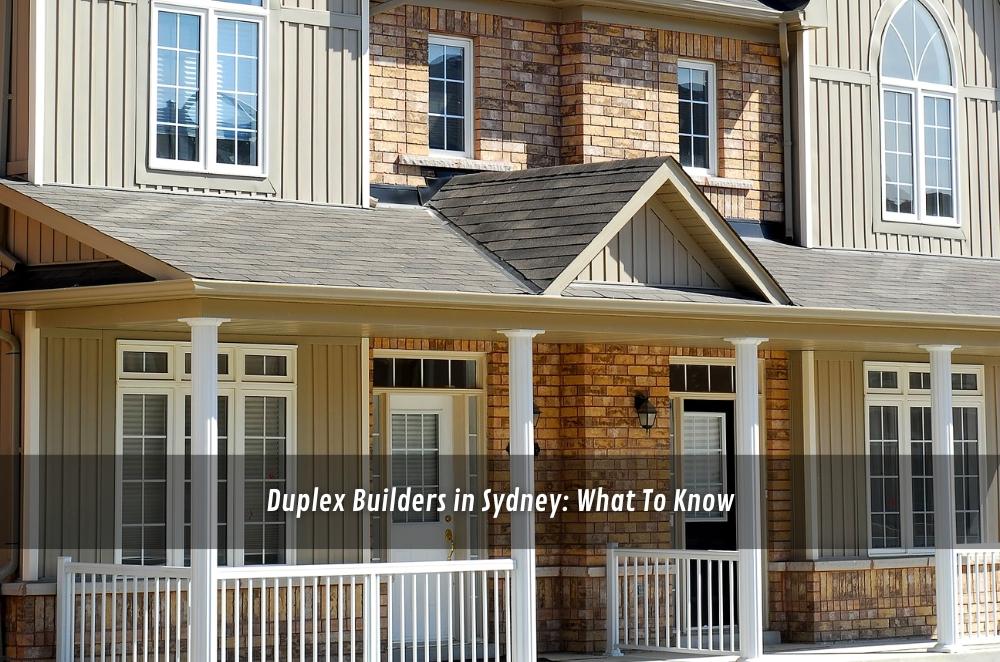Duplex Builders in Sydney: What To Know

Thinking about unlocking your block with a dual-occ? Smart move — done well, a duplex can double options: live in one, rent or sell the other. If you want a done-for-you path, Sydney duplex builders can streamline design, approvals and the build. This guide breaks down approvals (DA vs CDC), site checks, costs that actually move the needle, and design choices that lift value — with a couple of on-site lessons from recent Sydney jobs.
Understand your approval pathway (DA vs CDC)
There are two main routes in NSW: the traditional Development Application (DA) via council, or Complying Development (CDC) under the Low-Rise Housing Diversity Code. If your proposal ticks every numeric box in the Code, certifiers can fast-track approval — often within 20 days — for well-designed dual occupancies.
Rules do evolve. In 2024, NSW updated the Housing SEPP to make dual occupancies easier to permit in certain R2 Low Density areas — still subject to local overlays and exclusions. That change broadened where duplexes can be considered, but you must check your site’s zoning, hazards (bushfire/flood), and any mapped exclusions before banking on CDC.
Not sure where to start? Read the NSW explainer on building a duplex in NSW for what the Code covers, then ask your designer to test your sketch plans against the standards (height, setbacks, landscape, parking, private open space, etc.).
Scope your site early (this saves months)
Before you fall in love with a plan, run these checks:
-
Zoning and overlays: Confirm zone (often R2/R3) and any constraints — flood, bushfire attack level, acid sulphate soils, foreshore building lines.
-
Frontage and services: Measure frontage, driveway locations, sewer/stormwater runs, and existing trees.
-
Stormwater and fall: A basic level survey tells you if you’ll need charged lines, OSD (on-site detention), or easements.
-
Neighbour context: Window placements, overshadowing, and privacy will drive the upper-floor layout and courtyard orientation.
On-site lesson: In the Inner West, we had a 12.3 m frontage and a sewer main clipping the rear. The plan worked on paper — until the survey flagged an OSD requirement that ate into the courtyard. Because we caught it before DA, the designer rotated living areas to the north and stretched the garage slightly; CDC-compliant numbers still stacked, and approval stayed on track. (Cue relieved client.)
Budget: What actually drives cost (and what doesn’t)
You’ll see glossy “from” prices everywhere. The real drivers in Sydney:
-
Siteworks: Demo, excavation, rock, retaining, and spoil removal are line items that move fast.
-
Structure: Upper-floor spans, steel vs timber, balcony stacking, and acoustic upgrades add up.
-
Façade and envelope: Brick + render combos, window size/spec (acoustics, energy), and roof form change dollars more than you think.
-
Services: Stormwater solutions, electrical upgrades, separate meters, and NBN lead-ins.
-
Time: Design revisions and re-lodgements chew through the budget through prelims, rent and holding costs.
One thing people underestimate is BASIX. Since 1 October 2023, NSW has increased energy/thermal performance targets. Every duplex (two Class 1 dwellings) needs a BASIX certificate for DA or CDC, and meeting the numbers (glazing, insulation, shading, hot water/solar) can influence design choices and specs.
Design choices that add value (and compliance)
A duplex lives or dies by liveability and privacy. A few rules of thumb from the site:
-
Privacy first: Offset upper-floor windows; use highlight glazing where sightlines clash. Acoustic insulation to inter-tenancy walls and between floors is money well spent for resale.
-
Northern light without heat: Bring sun into living spaces, then manage it — eaves, external shading, low-SHGC glass on west. Those tweaks often help your BASIX pathway, too.
-
Parking and storage: CDC and many DCPs expect on-site parking; lining the garage wall with 600-mm storage keeps livability intact.
-
Courtyard quality: Keep private open space sunny and usable; align living/kitchen to it, not the driveway.
-
Services separation: Plan individual metering, hot water, and letterboxes early to avoid last-minute plan gymnastics.
If you want a deeper dive into layouts, setbacks and circulation patterns that work on local blocks, see duplex floor plans in Sydney. For narrow or irregular sites, a compact typology can still sing — check narrow lot duplex plans, single story for ideas that don’t collide with a builder’s commercial interests.
Second lesson from the site: On a sloping block in the Eastern Suburbs, stepping the slabs let us keep the overall height down and avoid an extra retaining wall near the boundary. That single move preserved neighbour sunlight hours and kept CDC compliance — while saving five figures in concrete and labour.
The build sequence (simple overview)
A tidy sequence avoids chaos and rework:
-
Survey & concept feasibility: Confirm zoning, overlays, sewer, and tree controls.
-
Pre-BASIX sketch: Test window sizes/shading and hot water strategy so your BASIX pathway is achievable without costly redesigns.
-
LOD drawings & reports: Engage engineering, bushfire/flood assessments if needed.
-
DA or CDC lodgement: If it’s CDC under the LRHDC and all standards are met, the certifier can issue approval on a fast timetable.
-
Detailed design & selections: Lock structural set-outs, stairs, wet areas, façade materials.
-
Construction: Set-out, services, rough-ins, frame, cladding/roof, linings, waterproofing/tiling, joinery, finishes.
-
Handover & defects: Practical completion walkthrough; warranty periods kick in.
Common pitfalls (and how to sidestep them)
-
Designing past your frontage: Garage widths, driveways and sightlines frequently bust CDC numbers; check them at the concept stage.
-
Window-to-wall ratios blowing BASIX: A wall of west-facing glass looks great on Instagram and terrible on an energy model. Balance with shading/spec changes.
-
Stormwater surprises: Don’t rely on old plans; get a survey with services marked and check capacity to the legal point of discharge.
-
Assuming DA is “easier”: Sometimes it is, especially with heritage or tricky sites. But if you can meet the Code, CDC is quicker and more predictable.
Who should you hire — and when?
If you’re juggling work, a reno, or a tight timeline, bringing in a builder-led design team early pays for itself. Integrated teams compress feedback loops between drafting, engineering, BASIX and cost planning — fewer redraws, fewer “oops” moments. For a start-to-finish option, duplex builders can own the approvals and build under one roof, while keeping you involved in the right decisions.
Final thoughts
Sydney is shifting toward missing-middle housing, and duplexes are right in the sweet spot: gentle density with genuine liveability. The playbook isn’t complicated — confirm the planning lane (DA vs CDC), design for privacy/sun/parking, and respect the numbers in BASIX and the Code. Do those three and your project stops feeling like “red tape” and starts moving like a well-timed sequence.
If you’re still in the sketch phase, pressure-test your idea against the NSW Low-Rise Housing Diversity Code and get a BASIX pre-check before falling in love with elevations. That’s the combo I see working over and over — fewer surprises, faster approvals, and a cleaner build. And if you want an accountable path from feasibility to handover, a specialist duplex crew can be the difference between a stressful year and a smooth one.







